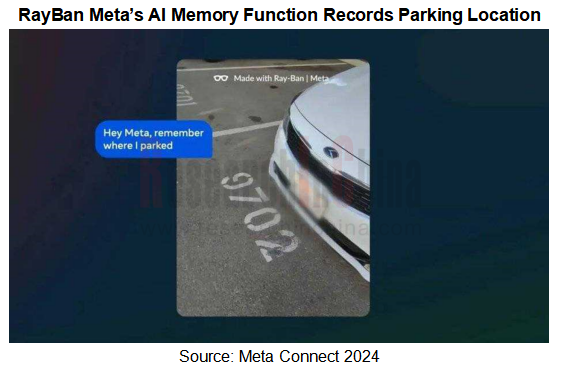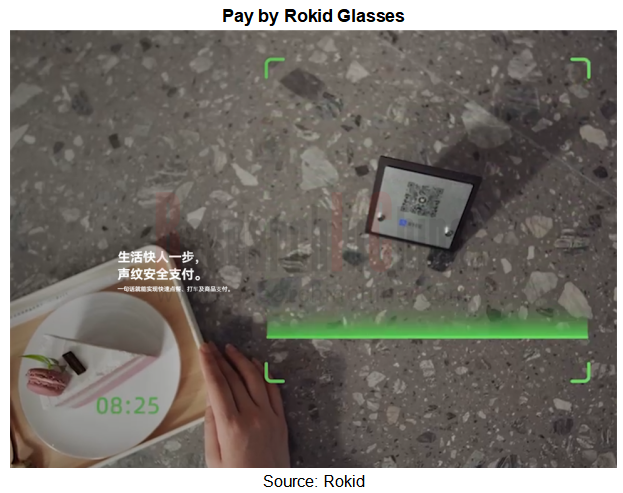Automotive XR industry research: automotive XR application is still in its infancy, and some OEMs have already made forward-looking layout
The Automotive XR Industry Report, 2025, released by ResearchInChina, focuses on the automotive XR field, deconstructs the XR industry chain and key technological elements, provides a detailed interpretation of core technologies and optical display solutions, and summarizes the latest products and solutions of Chinese and foreign automotive XR device and software solution suppliers. In addition, this report offers an in-depth analysis of XR layout of OEMs and related ecosystem companies, involving OEMs’ XR strategic layout, latest automotive XR products, and XR patents. Finally, it explores the status quo and trends of automotive XR development according to market dynamics.
1. The integration of XR devices and AI foundation models is revolutionizing user mobility experience.
As technology advances, the integration of XR devices and AI foundation models is bringing a disruption to the automotive sector, significantly enhancing user mobility experience. Specifically, with introduction of AI foundation models, the AI memory function of XR devices can accurately record the parking location of a vehicle using image recognition technology, helping users quickly locate their cars in complex parking lots. Additionally, some XR devices feature offline payment function, fostering the evolution of automotive ecosystems. Users can leverage XR devices to integrate essential mobility scenarios such as parking fee and refueling payments. In the future, this may extend to subscription to music/video content, purchase of vehicle apps, or full-category online shopping, forming a smart service loop that covers the entire mobility link to create more intelligent and efficient in-vehicle experiences for users.
Case 1: the AI memory function of automotive XR helps users accurately locate their vehicles.
In April 2024, the second-generation Ray-Ban Meta introduced the Meta AI foundation model. On September 26, 2024, the new version Llama 3.2 was released at the Meta Connect. It further enhances AI interaction capabilities and brings users an AI memory function that helps them remember daily details, such as parking locations, phone numbers, and shopping reminders.
With this feature, after parking, users can take a photo of the parking spot via either voice commands or the button on the right temple of the glasses. The photo is automatically stored in the glasses and, if connected to Wi-Fi, synced to the phone. Moreover Ray-Ban Meta automatically performs AI recognition on the photo, extracting information such as the parking spot number and storing it accordingly. When users need to locate their vehicle, they simply voice to inquire, and the glasses will provide the parking spot number by speech. Users can also view the photo in the Meta View app to locate the car.

Case 2: XR devices integrate payment function, expected to land in in-vehicle payment scenarios.
Rokid Glasses has now integrated Alipay's "AI Life Assistant" Zhi Xiao Bao, launching the innovative AR glasses payment function based on voiceprint recognition. In such scenarios as ride hailing, food ordering, or QR code scan to pay with Rokid Glasses, users only need to wake up Zhi Xiao Bao via voice command and state the amount (e.g., "Zhi Xiao Bao, pay 50 yuan"), and the system will complete identity verification through voiceprint comparison, enabling quick small-amount payments without any manual operation throughout the process.

On April 29, 2025, Meizu announced its official launch of the offline payment function for StarV Air2 smart glasses, and implementation of this function in Q3 this year. Users wearing StarV Air2 smart glasses only need to activate the payment function via the built-in voice assistant, utter a payment confirmation command, and voice to confirm payment details such as the amount, and they can complete the transaction effortlessly, without the need to pull out their phones or use other devices.
2. XR technology integrates vehicle data, expanding application scenarios.
XR technology integrates with vehicle software and hardware information. By deeply integrating vehicle hardware devices (e.g., radar and visual sensor) and software systems (navigation algorithm, infotainment system, vehicle cloud data, etc.), it expands vehicle application scenarios, including entertainment (e.g., in-cabin viewing/gaming), navigation and driving assistance (e.g., navigation instruction, parking assist, and danger warning), and seamless information flow (e.g., all-scenario interconnection between multiple devices like smartphones, smart glasses and smart cars).
3. OEMs deploy XR technology to expand new growth space in the market.
According to the analysis results of the report, although the integration of XR technology and vehicles demonstrates considerable application potential in scenarios, automotive XR technology is still in its infancy and has yet to reach a market tipping point. The advancement of the technology also faces obstacles, primarily due to challenges such as insufficient maturity, high costs, and the need to improve user acceptance in automotive applications.
Facing these challenges, OEMs work to deploy and seek the way to make breakthroughs. In 2025, GAC, FAW, Great Wall and Zeekr among others have disclosed XR-related patents; Li Auto also posted several job openings related to AI/VR smart glasses in its 2025 recruitment notices, including Senior Hardware Product Manager and AI Hardware Product Manager, which indicates its great efforts to build teams and promote application of XR technology in the automotive sector.
This shows that OEMs are highly confident in the application prospects of XR technology in the automotive field and are taking concrete actions to accelerate their deployment. As the technology matures, costs decline, and user demand for smart mobility experience grows, XR technology is expected to become a key driver of automotive industry transformation, creating new growth opportunities for the sector.
Autonomous Driving Domain Controller and Central Computing Unit (CCU) Industry Report, 2025
Research on Autonomous Driving Domain Controllers: Monthly Penetration Rate Exceeded 30% for the First Time, and 700T+ Ultrahigh-compute Domain Controller Products Are Rapidly Installed in Vehicles
L...
China Automotive Lighting and Ambient Lighting System Research Report, 2025
Automotive Lighting System Research: In 2025H1, Autonomous Driving System (ADS) Marker Lamps Saw an 11-Fold Year-on-Year Growth and the Installation Rate of Automotive LED Lighting Approached 90...
Ecological Domain and Automotive Hardware Expansion Research Report, 2025
ResearchInChina has released the Ecological Domain and Automotive Hardware Expansion Research Report, 2025, which delves into the application of various automotive extended hardware, supplier ecologic...
Automotive Seating Innovation Technology Trend Research Report, 2025
Automotive Seating Research: With Popularization of Comfort Functions, How to Properly "Stack Functions" for Seating?
This report studies the status quo of seating technologies and functions in aspe...
Research Report on Chinese Suppliers’ Overseas Layout of Intelligent Driving, 2025
Research on Overseas Layout of Intelligent Driving: There Are Multiple Challenges in Overseas Layout, and Light-Asset Cooperation with Foreign Suppliers Emerges as the Optimal Solution at Present
20...
High-Voltage Power Supply in New Energy Vehicle (BMS, BDU, Relay, Integrated Battery Box) Research Report, 2025
The high-voltage power supply system is a core component of new energy vehicles. The battery pack serves as the central energy source, with the capacity of power battery affecting the vehicle's range,...
Automotive Radio Frequency System-on-Chip (RF SoC) and Module Research Report, 2025
Automotive RF SoC Research: The Pace of Introducing "Nerve Endings" such as UWB, NTN Satellite Communication, NearLink, and WIFI into Intelligent Vehicles Quickens
RF SoC (Radio Frequency Syst...
Automotive Power Management ICs and Signal Chain Chips Industry Research Report, 2025
Analog chips are used to process continuous analog signals from the natural world, such as light, sound, electricity/magnetism, position/speed/acceleration, and temperature. They are mainly composed o...
Global and China Electronic Rearview Mirror Industry Report, 2025
Based on the installation location, electronic rearview mirrors can be divided into electronic interior rearview mirrors (i.e., streaming media rearview mirrors) and electronic exterior rearview mirro...
Intelligent Cockpit Tier 1 Supplier Research Report, 2025 (Chinese Companies)
Intelligent Cockpit Tier1 Suppliers Research: Emerging AI Cockpit Products Fuel Layout of Full-Scenario Cockpit Ecosystem
This report mainly analyzes the current layout, innovative products, and deve...
Next-generation Central and Zonal Communication Network Topology and Chip Industry Research Report, 2025
The automotive E/E architecture is evolving towards a "central computing + zonal control" architecture, where the central computing platform is responsible for high-computing-power tasks, and zonal co...
Vehicle-road-cloud Integration and C-V2X Industry Research Report, 2025
Vehicle-side C-V2X Application Scenarios: Transition from R16 to R17, Providing a Communication Base for High-level Autonomous Driving, with the C-V2X On-board Explosion Period Approaching
In 2024, t...
Intelligent Cockpit Patent Analysis Report, 2025
Patent Trend: Three Major Directions of Intelligent Cockpits in 2025
This report explores the development trends of cutting-edge intelligent cockpits from the perspective of patents. The research sco...
Smart Car Information Security (Cybersecurity and Data Security) Research Report, 2025
Research on Automotive Information Security: AI Fusion Intelligent Protection and Ecological Collaboration Ensure Cybersecurity and Data Security
At present, what are the security risks faced by inte...
New Energy Vehicle 800-1000V High-Voltage Architecture and Supply Chain Research Report, 2025
Research on 800-1000V Architecture: to be installed in over 7 million vehicles in 2030, marking the arrival of the era of full-domain high voltage and megawatt supercharging.
In 2025, the 800-1000V h...
Foreign Tier 1 ADAS Suppliers Industry Research Report 2025
Research on Overseas Tier 1 ADAS Suppliers: Three Paths for Foreign Enterprises to Transfer to NOA
Foreign Tier 1 ADAS suppliers are obviously lagging behind in the field of NOA.
In 2024, Aptiv (2.6...
VLA Large Model Applications in Automotive and Robotics Research Report, 2025
ResearchInChina releases "VLA Large Model Applications in Automotive and Robotics Research Report, 2025": The report summarizes and analyzes the technical origin, development stages, application cases...
OEMs’ Next-generation In-vehicle Infotainment (IVI) System Trends Report, 2025
ResearchInChina releases the "OEMs’ Next-generation In-vehicle Infotainment (IVI) System Trends Report, 2025", which sorts out iterative development context of mainstream automakers in terms of infota...